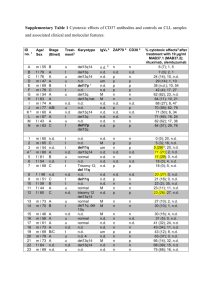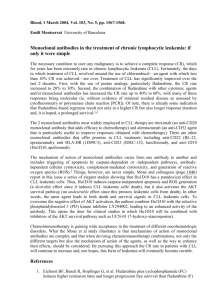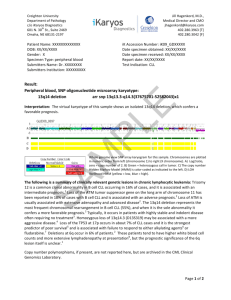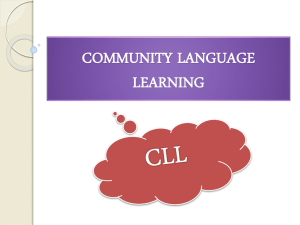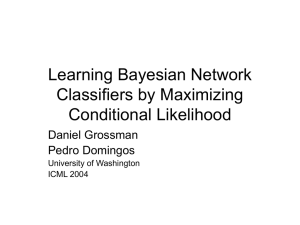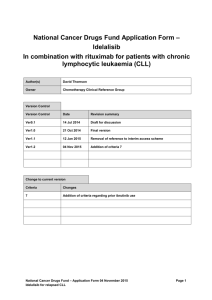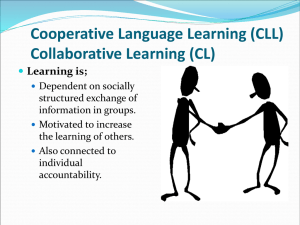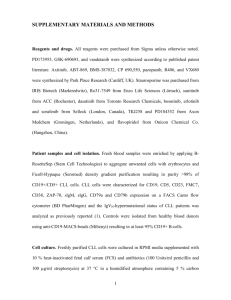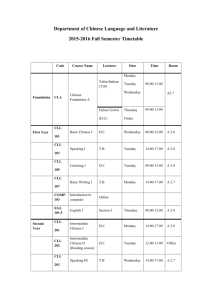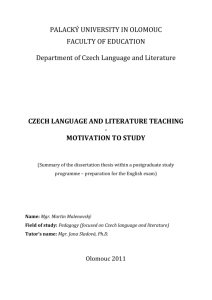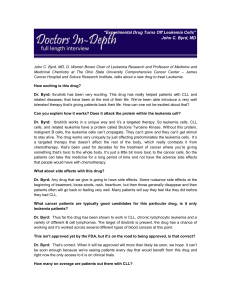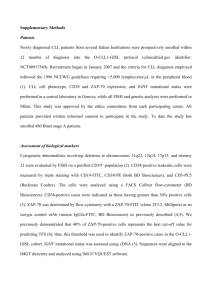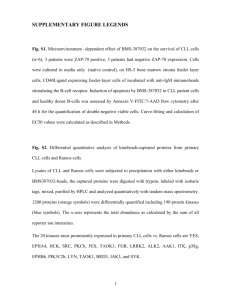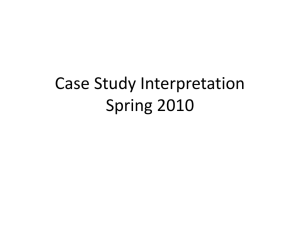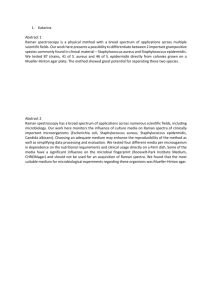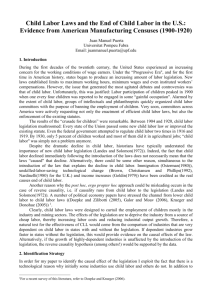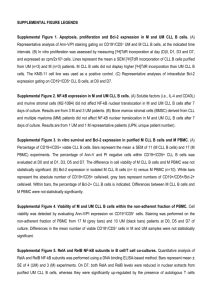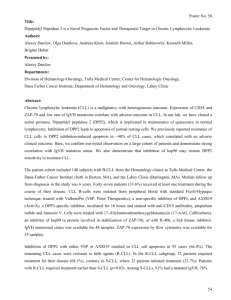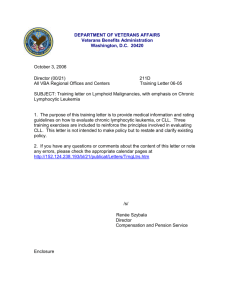New Biomarker May Predict Prognosis for Patients with Chronic
advertisement
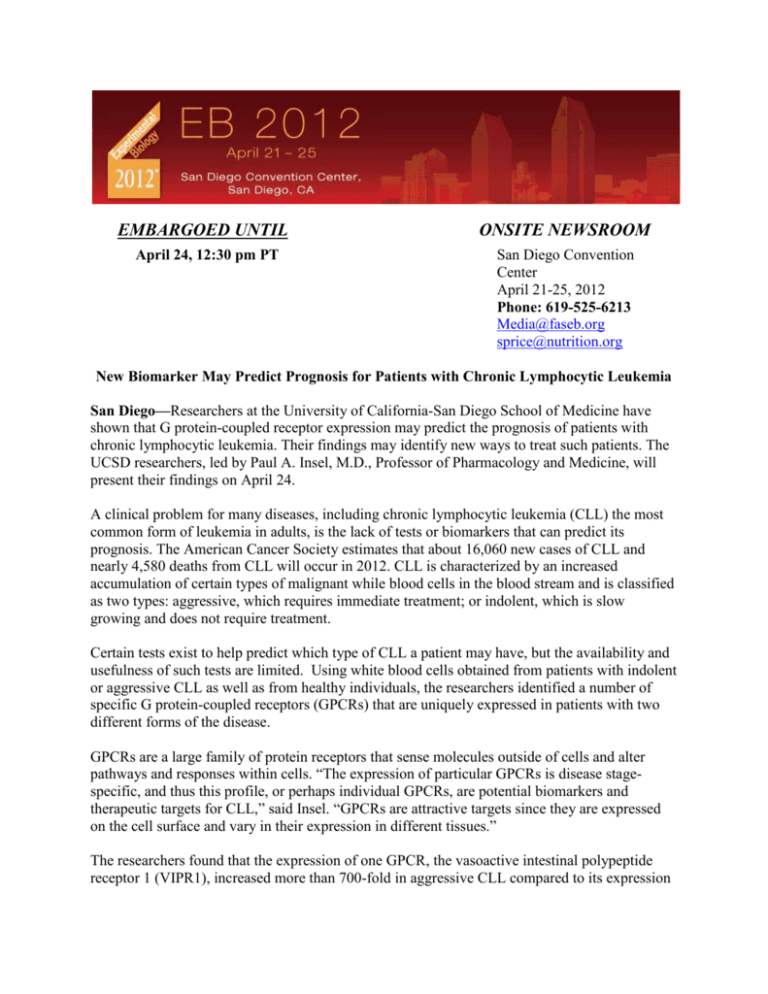
EMBARGOED UNTIL ONSITE NEWSROOM April 24, 12:30 pm PT San Diego Convention Center April 21-25, 2012 Phone: 619-525-6213 Media@faseb.org sprice@nutrition.org New Biomarker May Predict Prognosis for Patients with Chronic Lymphocytic Leukemia San Diego—Researchers at the University of California-San Diego School of Medicine have shown that G protein-coupled receptor expression may predict the prognosis of patients with chronic lymphocytic leukemia. Their findings may identify new ways to treat such patients. The UCSD researchers, led by Paul A. Insel, M.D., Professor of Pharmacology and Medicine, will present their findings on April 24. A clinical problem for many diseases, including chronic lymphocytic leukemia (CLL) the most common form of leukemia in adults, is the lack of tests or biomarkers that can predict its prognosis. The American Cancer Society estimates that about 16,060 new cases of CLL and nearly 4,580 deaths from CLL will occur in 2012. CLL is characterized by an increased accumulation of certain types of malignant while blood cells in the blood stream and is classified as two types: aggressive, which requires immediate treatment; or indolent, which is slow growing and does not require treatment. Certain tests exist to help predict which type of CLL a patient may have, but the availability and usefulness of such tests are limited. Using white blood cells obtained from patients with indolent or aggressive CLL as well as from healthy individuals, the researchers identified a number of specific G protein-coupled receptors (GPCRs) that are uniquely expressed in patients with two different forms of the disease. GPCRs are a large family of protein receptors that sense molecules outside of cells and alter pathways and responses within cells. “The expression of particular GPCRs is disease stagespecific, and thus this profile, or perhaps individual GPCRs, are potential biomarkers and therapeutic targets for CLL,” said Insel. “GPCRs are attractive targets since they are expressed on the cell surface and vary in their expression in different tissues.” The researchers found that the expression of one GPCR, the vasoactive intestinal polypeptide receptor 1 (VIPR1), increased more than 700-fold in aggressive CLL compared to its expression in patients with indolent CLL. In addition, treating the leukemic cells with VIP, which activates VIPR1, induced their death. “We find that the expression of specific GPCRs appears to a play a role in prognosis of CLL,” said Dr. Insel. “Thus, such GPCRs may also provide new ways to treat the disease, since they reflect part of its underlying biology and pathology. We are undertaking other studies to determine if particular patterns of GPCR expression and perhaps that of uniquely expressed GPCRs characterize other cancers and other diseases.” About Experimental Biology 2012 Experimental Biology is an annual gathering of six scientific societies that this year is expected to draw 13,000-plus independent scientists and exhibitors. The societies represented are: American Association of Anatomists (AAA), American Physiological Society (APS), American Society for Biochemistry and Molecular Biology (ASBMB), American Society for Investigative Pathology (ASIP), American Society for Nutrition (ASN) and the American Society for Pharmacology and Experimental Therapeutics (ASPET). About ASPET ASPET is a 5,100 member scientific society whose members conduct basic and clinical pharmacological research within the academic, industrial and government sectors. Our members discover and develop new medicines and therapeutic agents that fight existing and emerging diseases, as well as increase our knowledge regarding how therapeutics affects humans.


